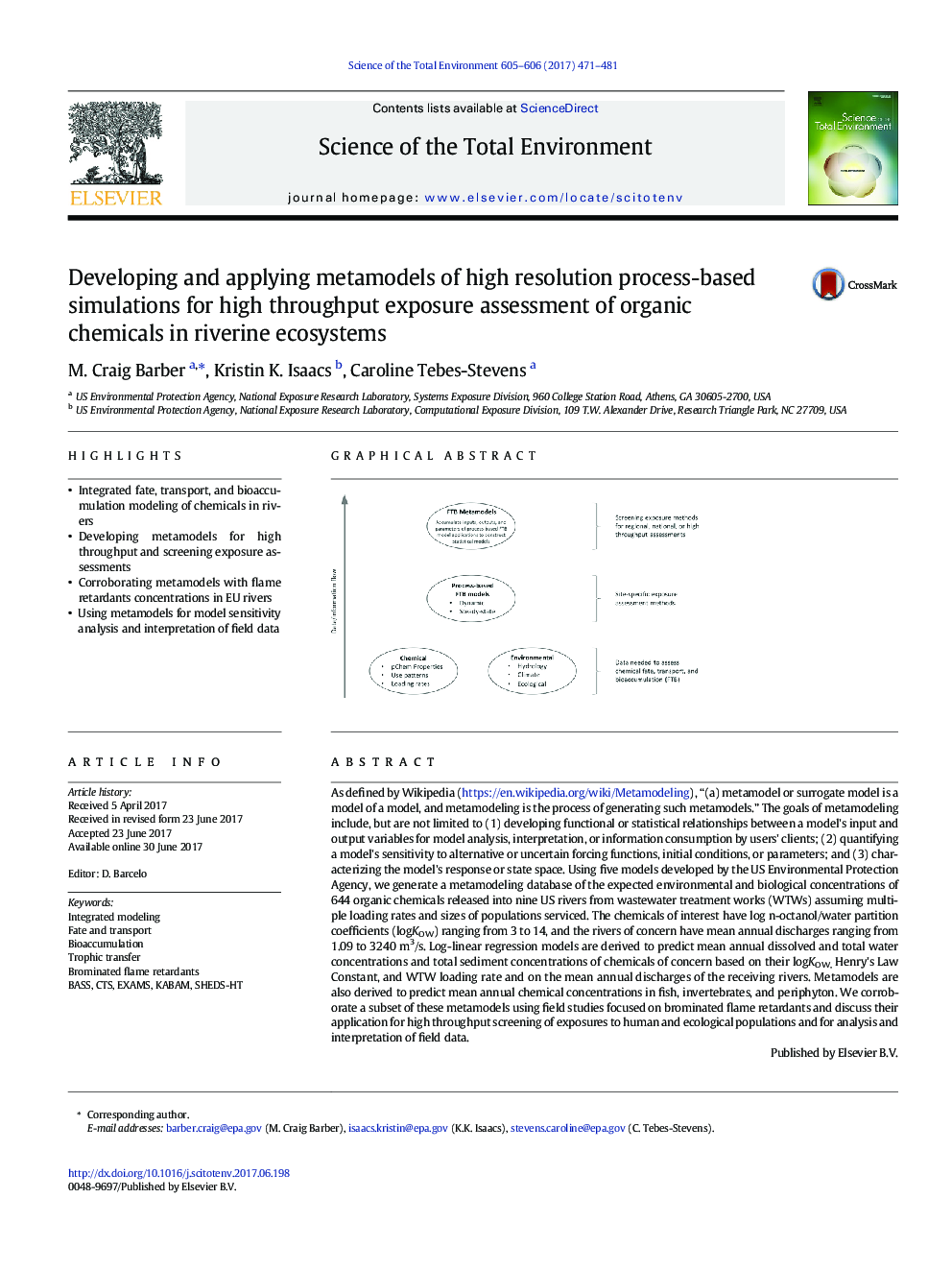| کد مقاله | کد نشریه | سال انتشار | مقاله انگلیسی | نسخه تمام متن |
|---|---|---|---|---|
| 5750615 | 1619695 | 2017 | 11 صفحه PDF | دانلود رایگان |
- Integrated fate, transport, and bioaccumulation modeling of chemicals in rivers
- Developing metamodels for high throughput and screening exposure assessments
- Corroborating metamodels with flame retardants concentrations in EU rivers
- Using metamodels for model sensitivity analysis and interpretation of field data
As defined by Wikipedia (https://en.wikipedia.org/wiki/Metamodeling), “(a) metamodel or surrogate model is a model of a model, and metamodeling is the process of generating such metamodels.” The goals of metamodeling include, but are not limited to (1) developing functional or statistical relationships between a model's input and output variables for model analysis, interpretation, or information consumption by users' clients; (2) quantifying a model's sensitivity to alternative or uncertain forcing functions, initial conditions, or parameters; and (3) characterizing the model's response or state space. Using five models developed by the US Environmental Protection Agency, we generate a metamodeling database of the expected environmental and biological concentrations of 644 organic chemicals released into nine US rivers from wastewater treatment works (WTWs) assuming multiple loading rates and sizes of populations serviced. The chemicals of interest have log n-octanol/water partition coefficients (logKOW) ranging from 3 to 14, and the rivers of concern have mean annual discharges ranging from 1.09 to 3240Â m3/s. Log-linear regression models are derived to predict mean annual dissolved and total water concentrations and total sediment concentrations of chemicals of concern based on their logKOW, Henry's Law Constant, and WTW loading rate and on the mean annual discharges of the receiving rivers. Metamodels are also derived to predict mean annual chemical concentrations in fish, invertebrates, and periphyton. We corroborate a subset of these metamodels using field studies focused on brominated flame retardants and discuss their application for high throughput screening of exposures to human and ecological populations and for analysis and interpretation of field data.
144
Journal: Science of The Total Environment - Volumes 605â606, 15 December 2017, Pages 471-481
